
- •Acknowledgments
- •Contents
- •Introduction
- •The Contributing Artists
- •Sketching Different Head Shapes
- •Facial Features
- •How to Draw Hair
- •Popular Comic Book Expressions
- •Grimaces
- •Anatomical Proportions
- •Body Basics
- •Building an Action Pose
- •The Action Figure, Step By Step
- •The Heroic Female Figure
- •Anatomy of the Hand
- •Basic Hand Poses
- •Heroic Hands
- •Female Hands
- •Turnarounds
- •Devastating Punches
- •Clean Punches
- •The Lunge Attack
- •Leaning Into the Punch or Kick
- •The Judo Shoulder Throw
- •David vs. Goliath
- •The Balance of Power
- •The Renegade Soldier
- •Sword-and-Sorcery Villains
- •Forces of Evil
- •Inventing a Villain
- •Beastly Villains
- •Hollywood Heavies
- •Dressed to Kill
- •Unearthly Creatures
- •Comic Book Beauties Then...
- •Femme Fatales Yesterday...
- •...And Today
- •Denizen of the Street
- •Beauty in All Shapes and Colors
- •Drawing from Photos
- •Good Gal Heroes
- •Strong But Sexy
- •A Hint About Skintight Costumes
- •One-Point Perspective
- •Two-Point Perspective
- •The Horizon Line and the Figure
- •Multiple Figures in Perspective
- •Hanging Figures on a Horizontal Line
- •Creating Volume with Perspective
- •Dynamic Angles
- •From Start to Finish
- •Using Pattern and Value
- •Special Effects in Space
- •Bursts
- •Putting It All Together
- •Effective Composition
- •The Establishing Shot
- •What a Comic Book Script Looks Like
- •Thumbnail Sketches
- •The Rough Layout
- •Preparing a Pencil Layout for Inking
- •The Final Inked Page
- •Inking Like a Pro
- •Stuff You Need to Know
- •Art Supplies Shopping List
- •Reflections
- •Light Source
- •Shading
- •Varying An Ink Line
- •Folds and Drapery
- •Designing Costumes
- •Rapid Fire
- •In The Crosshairs
- •Hidden Danger
- •Aggressive Assault Vehicles
- •Off-Road
- •Mean Machines
- •Sky Patrol
- •Fighter Planes
- •How Things are Supposed To Get Done
- •How to Get Your First Job
- •Interview With A Noted Comic Book Editor and Publisher

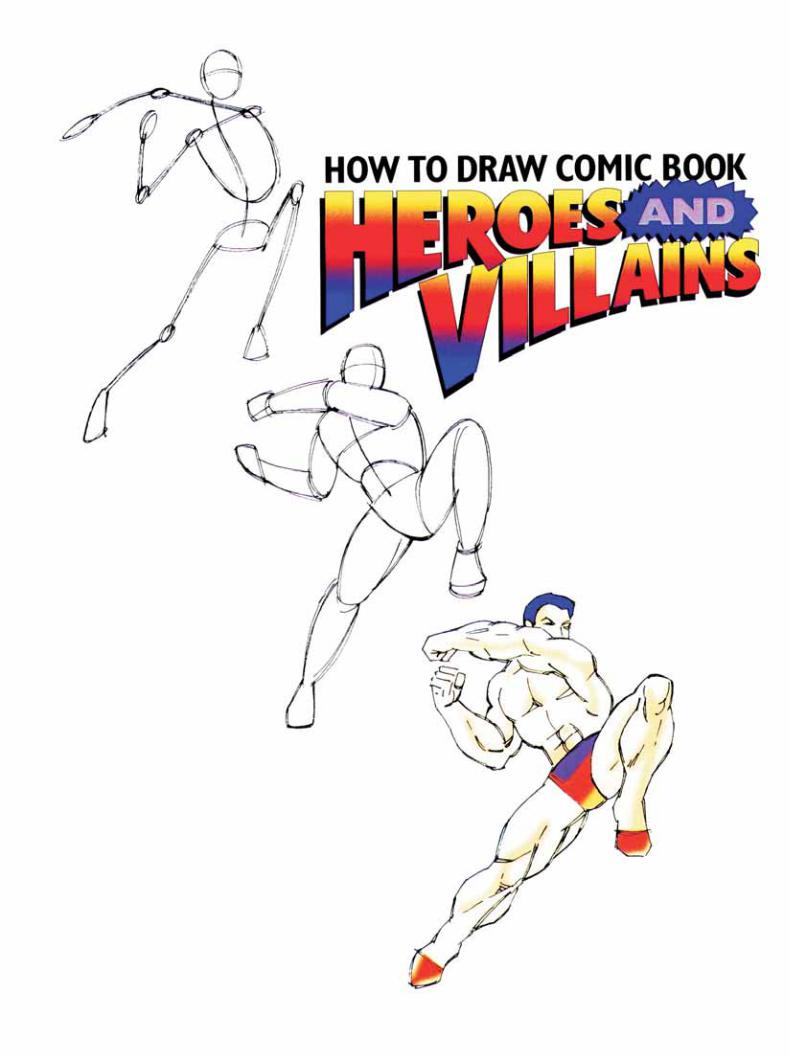

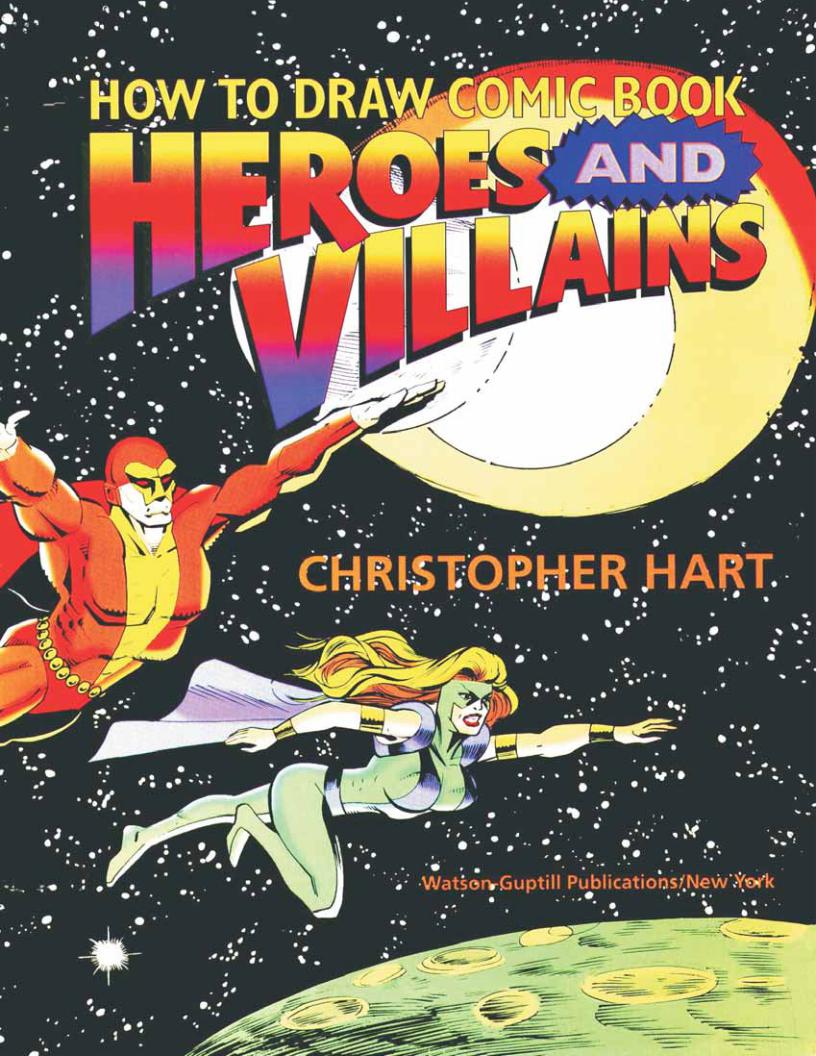
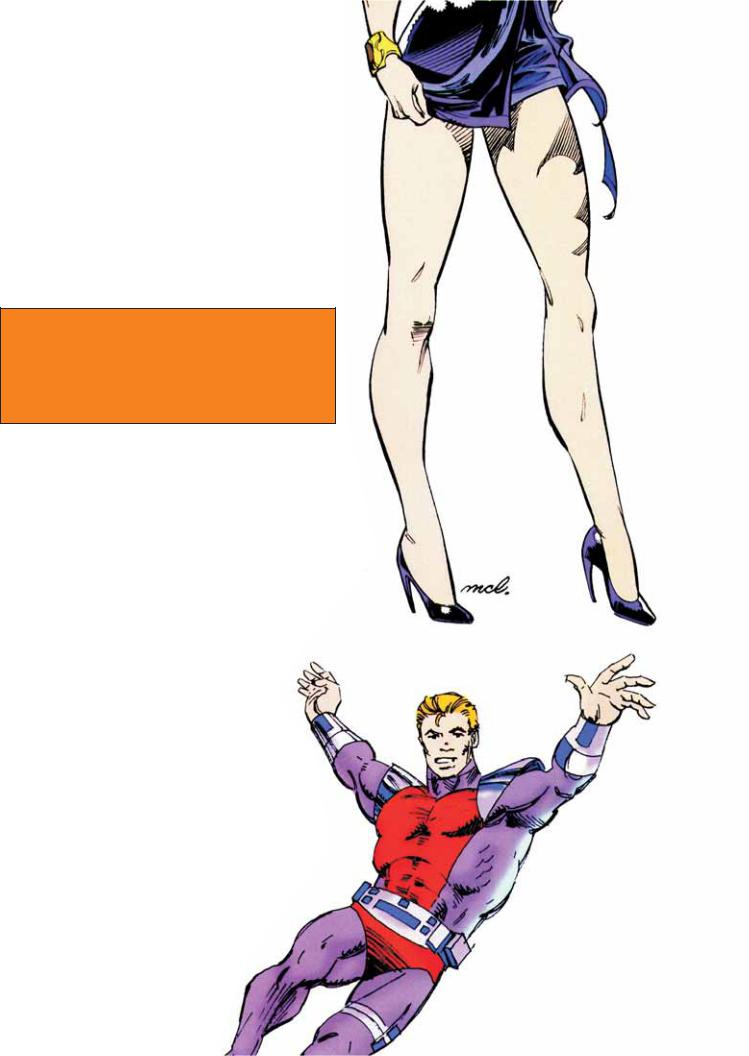
Dedicated to everyone who dreams big
ACKNOWLEDGMENTS
I would like to express my sincere gratitude to Lenny Brown, creative director of the Topps
Company, whom I consider to be the maestro of the comics, and without whose help this book might not have been written. Special thanks goes to Jim Salicrup, a former editor of Marvel Comics and now associate publisher and editor-in-chief of Topps Comics, for sharing his time and insights with my readers. Thanks also to Darryl Banks and Rich Faber for their contribution to this book.
A Note to Readers, Parents, and Teachers
Some art materials are unsuitable for young children to use. Children should only use art materials that are labeled as nontoxic and carry the statement "Conforms to ASTM D-4236" or similar wording. All purchase of art materials for and art activities of children under the age of 12 should be supervised by an adult.
Senior Editor. Candace Raney
Edited by Joy Aqullino
Designed by Bob Fillie, Graphiti Graphics
Graphic production by Hector Campbell and Sharon Kaplan
Chapter title art by Carmine Vecchio
Copyright ©1995 by Art Studio, LLC
First published in 1995 by Watson-Guptill Publications
a division of VNU Business Media, Inc., 770 Broadway, New York, NY 10003 www.watsonguptill.com
Library of Congress Cataloging-in-Publication Data
Hart, Christopher
How to draw comic book heroes and villains/Christopher Hart.
.p. cm. Includes index.
Summary. Covers how to create your own original comic book characters, draw fight scenes, design special powers, and invent imaginary creatures, with a section on how the comic business works.
ISBN 0-8230-2245-5
1.Cartooning-Technique-Juvenile literature. 2. Comic books, strips, etc.-Technique-Juvenile literature. 3. Heroes-Caricatures and cartoons-Juvenile literature. [1. Cartoons and comics.
2.Cartooning-Technique. 3. Drawing-Technique.]
I Title NC1764.H371995_
741.5-dc20 95-36859 CIP
AC
All rights reserved. No part of this publication may be reproduced or used in any form or by any means-graphic, electronic, or mechanical, including photocopying, recording, taping,or information storage and retrieval systems-without written permission of the publisher
Manufactured in the United States of America
First printing, 1995
10 11 12 13 14 / 06 05 04 03 02
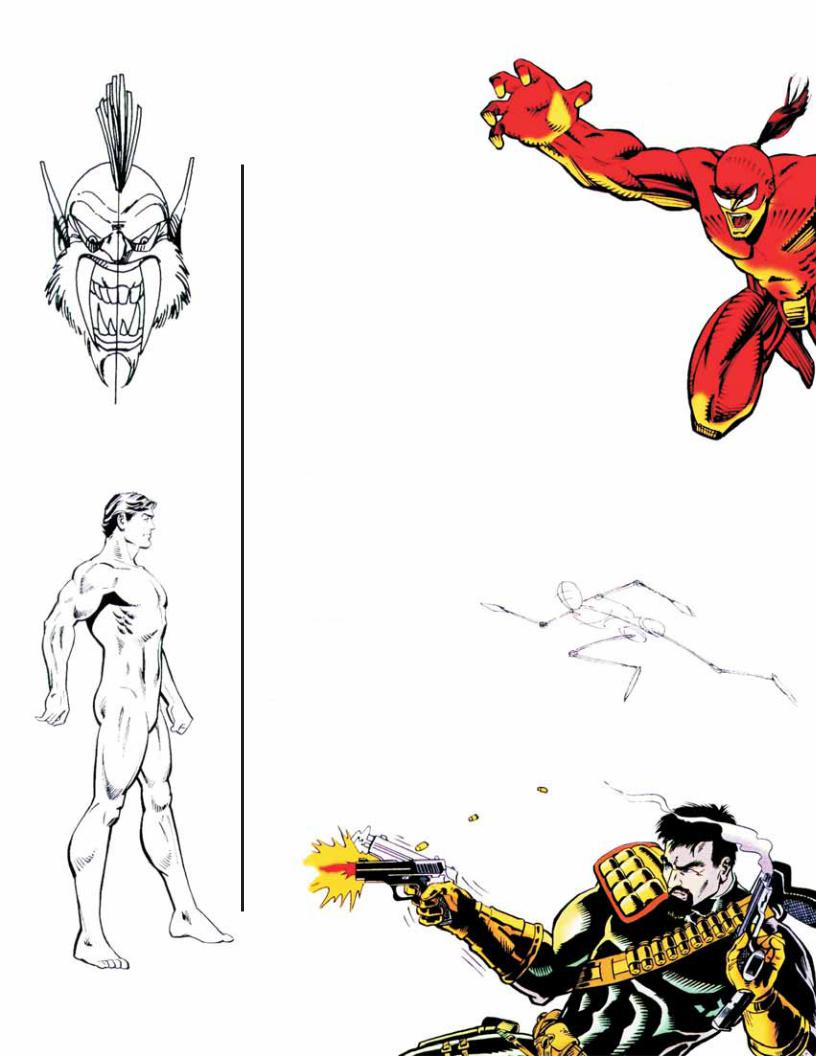
CONTENTS
INTRODUCTION
THE CONTRIBUTING ARTISTS
AWESOME ANATOMY
"Pumping up" your drawing skills for the heroic head and figure
ZAP! POW! CRUNCH!
Creating convincing fight scenes
FANTASTIC FOES
Inventing bizarre villains, monsters, and mutants
BEAUTIFUL BUT DEADLY
Drawing ravishing and resourceful heroines-and enticing adversaries
POWERFUL PERSPECTIVE
Using the rules of perspective to enhance your drawings
THE BIG BANG!
How and when to use special effects
THE PLOT THICKENS
The visual art of storytelling
SECRETS OF THE PROS
Mysteries of inking, shading, and folds revealed
FIRE POWER
Advanced weaponry and assault vehicles
MAKING IT IN THE BIZ
The ins and outs of the comic book business
I
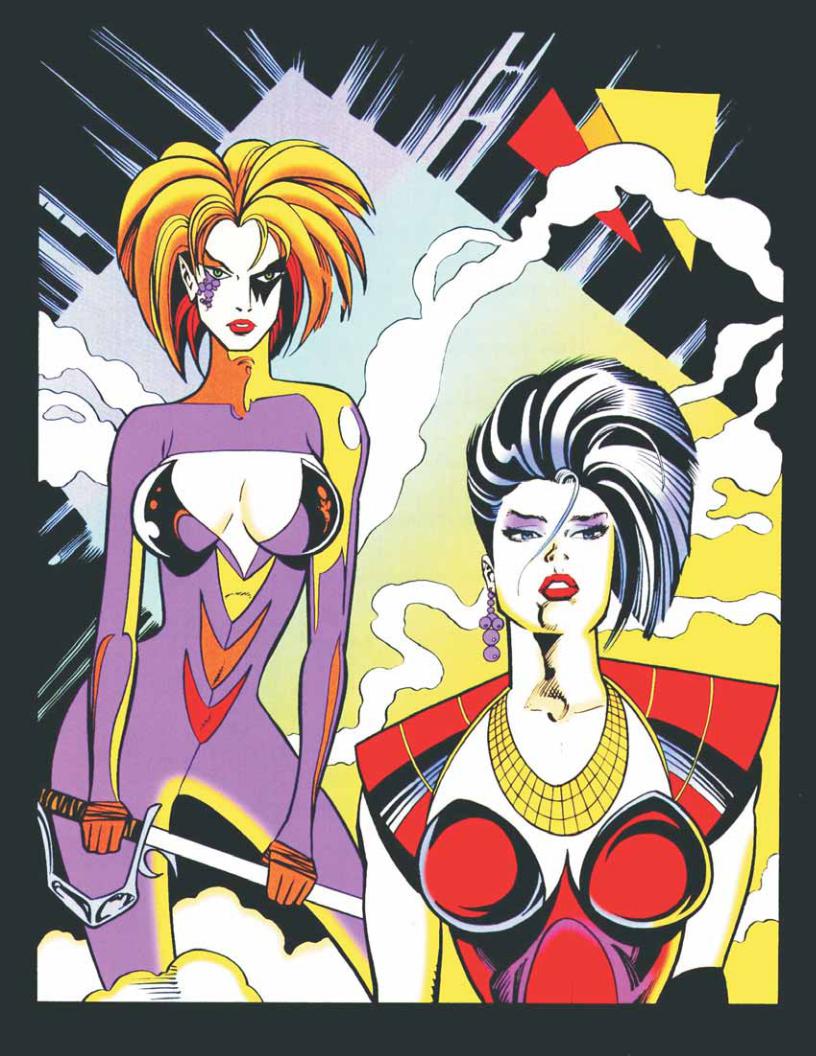
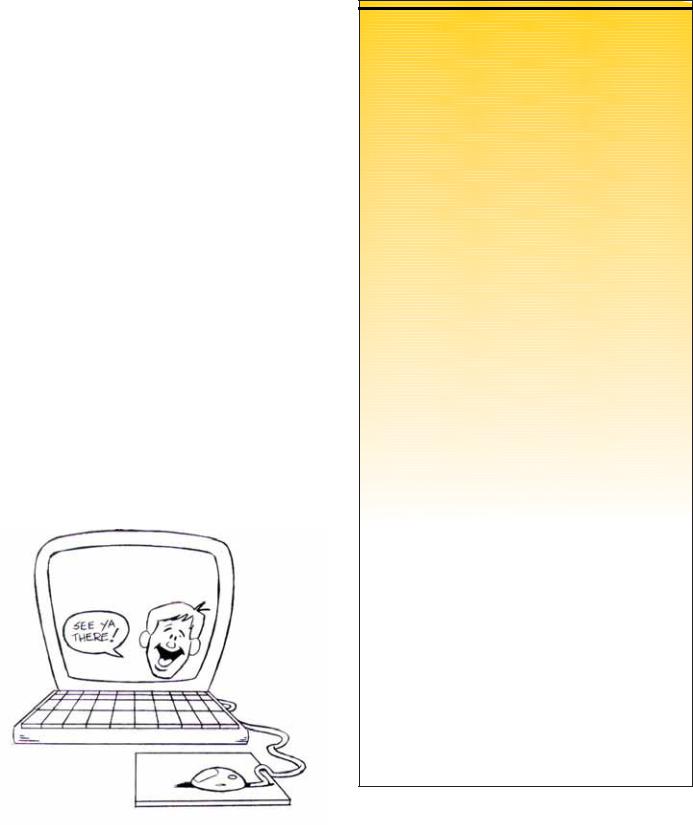
ow to Draw Comic Book Heroes and Villains is
Hthe ultimate book for anyone aspiring to be a professional comic book illustrator. I'm proud
to tell you that these pages feature the work of some of the best talents in the comic book field. You'll learn from artists who have drawn
Superman, Batman, Spider-Man, The Hulk, Conan the Barbarian, The Fantastic Four, The Flash, and Elvira. These pros, who have worked for such notable publishers as Marvel, DC, Valiant, and Defiant, reveal the secrets of designing powerful and convincing fight scenes, drawing heroic anatomy, inventing really bad villains, using special effects techniques, interpreting a script visually, designing advanced weaponry, and much, much, more.
Also, there's a chapter devoted to answering
the questions that every serious-minded aspiring artist has. You'll learn what to include in a winning
portfolio, what the shortcuts are to landing your first job, and how the business really works. For instance, did you know that the person who draws the covers is rarely the same person who draws the interior pages?
This book also features an exclusive interview with Jim Salicrup, the renowned former Marvel editor, and now associate publisher and editor-in-chief, of Topps Comics. He shares his insights on the business as he tells you exactly what qualities he and other comic book editors look for when hiring a new artist.
Pencil, paper. And this book. And you're on your way. Dare.
www.Hart2Draw.com
Introduction
THE CONTRIBUTING ARTISTS
FRANK McLAUGHLIN
Celebrated pen-and-ink artist McLaughlin has 35 years of experience in the comic book industry. Frank has contributed his talents
to such famous comic books as Superman, Batman, Wonder Woman, and Green Arrow
for DC Comics, as well as Captain America and Iron Fist for Marvel Comics and Femme Fatale for Broadway Comics. He has worked for practically every major comic book publisher, including Valiant, Defiant, Charlton, Seaboard, Dell, and Archie.
GRAY MORROW
Admired and envied for his ability to draw the most gorgeous women in the comic book field, Morrow has created illustrations for Playboy and Penthouse, and also has the distinction of having worked on Batman and Superman for DC Comics. He worked on the animated TV show Spider-Man, the comic strip Tarzan for United Features Syndicate, Power Rangers for Gladstone Comics, and Creepy and Eerie Comics.
FRANK SPRINGER
Well known throughout the industry, Springer is highly regarded for his powerful line drawings. Among his best-known work, Springer drew The Hulk, Conan the Barbarian, The Fantastic Four, Spider-Man, Sgt. Fury, and The Invaders for Marvel, as well as The Flash for DC, Elvira for Claypool Comics, and
The Adventures of Hedley Kase for Sports Illustrated Kids.
J. ALEX MORRISSEY
One of the outstanding new artists on the cutting edge of the industry, Morrissey has drawn many Marvel titles, including The Punisher Ghost Rider, Cloak and Dagger, Cage, Iron Fist, and Power Pack, as well as Division 13 for Dark Horse Comics.
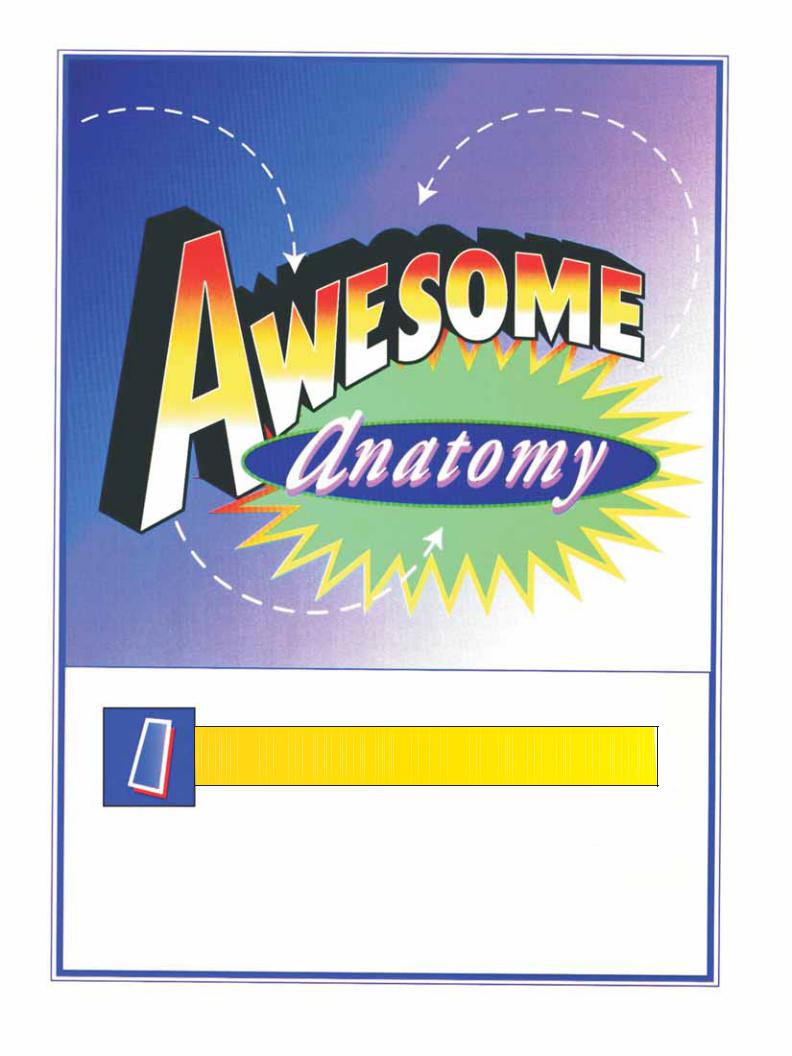
F YOU WANT TO INFLICT MAXIMUM DEVISTATION
on bad guys, then regular anatomy just won’t do. You’ve got to pump up your heroes to awesome proportions. In this chapter, you’ll learn exactly how the pros transform ordinary anatomy into super-powered anatomy.

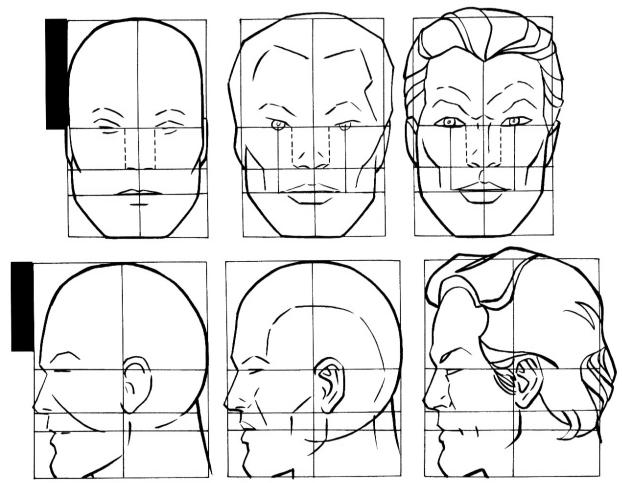
the classic hero’s head
Because professional comic book artists don't always have access to live models, they've created a system for drawing a perfectly proportioned
head. The proportions used in this method of drawing the head can be seen in some of the world's most popular comic book heroes.
To make it easier to see how we arrive at these proportions, start by placing the head inside of a rectangle. Then think in terms of halves. Divide the rectangle in half with a horizontal guideline that's where the eyes go. Place the end of the nose halfway between the eyes and the bottom of the chin. Draw the lips halfway between the end
of the nose and the chin
By drawing guidelines from the center of each eye to the edges of the lips, you get the correct width of the lips. The dotted lines indicate that the eyes are one eye's width apart.
The details, such as wrinkles and hair, are added only after the basic form has been established. If your hero's head doesn't look right, check it against these classic proportions and adjust it accordingly.
F
R
O
N
T
S
I
D
E
Just as in the front view, the eyes in a side view are positioned in the middle of
the head. Much of the head's mass appears behind the ear Only the front portion of the head makes up the face.
The bottom of the ear and the bottom of the nose are drawn at the same height, as are the top of the ear and the contour of the eyebrow.
The chin should be strong and angular. The neck is thick and muscular.
